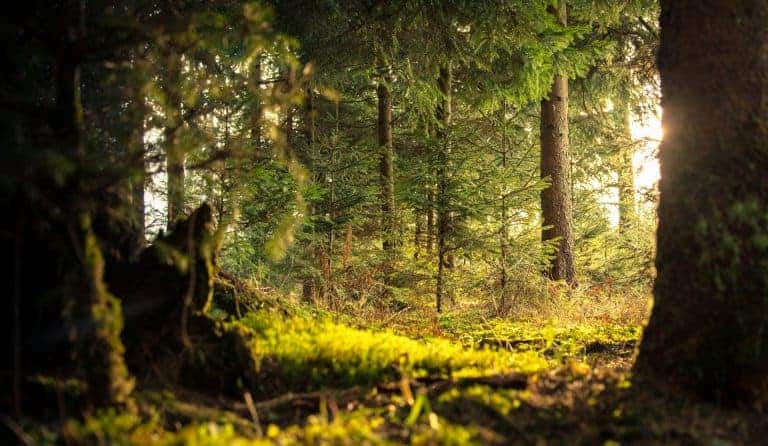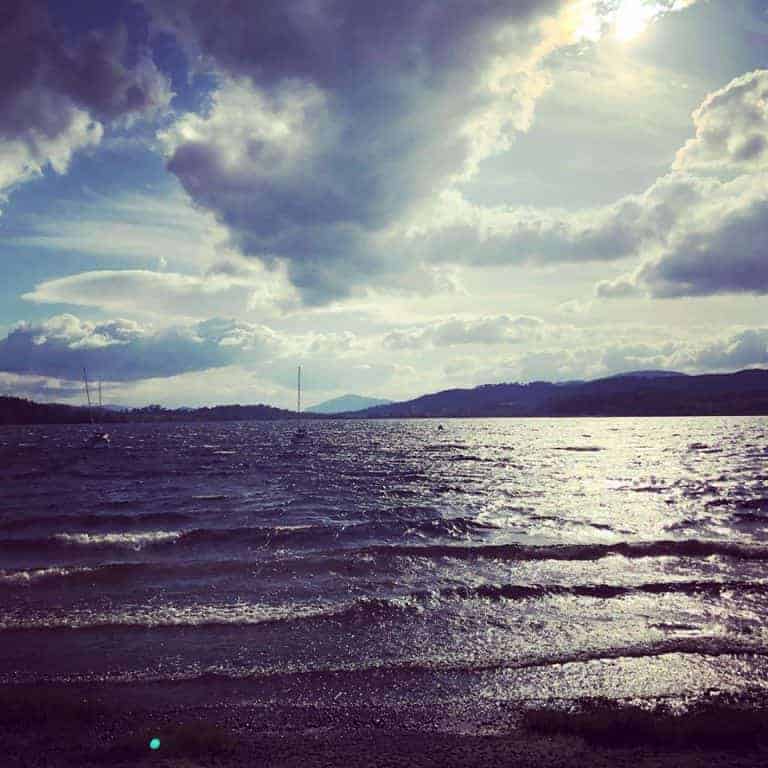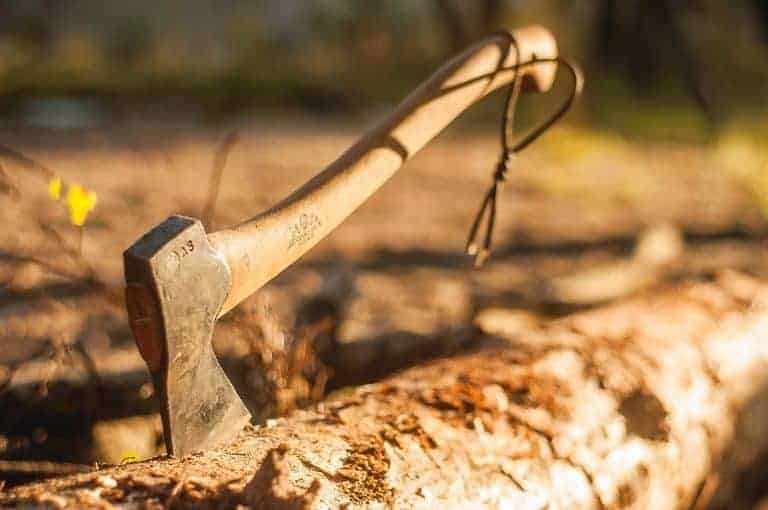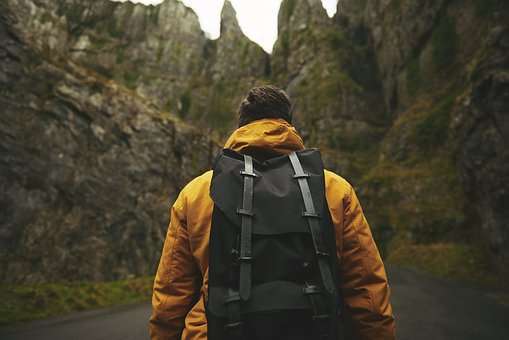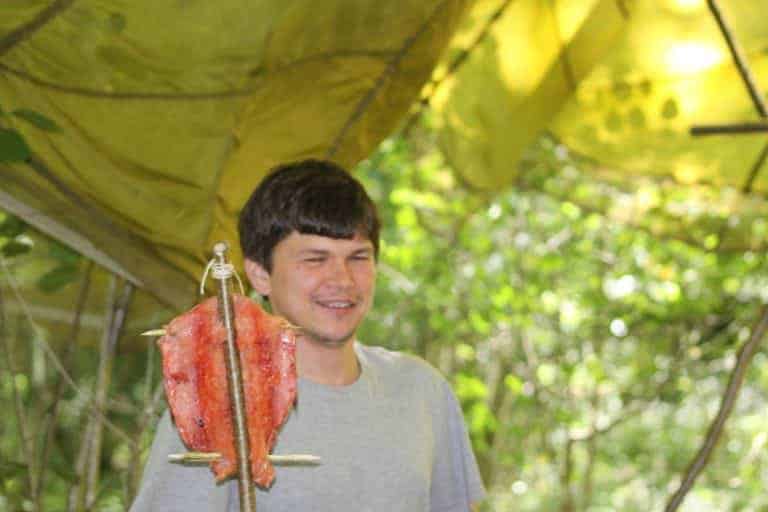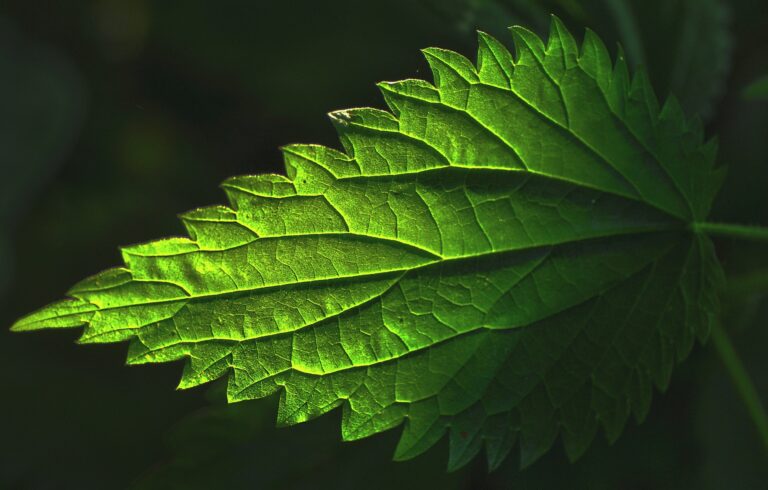Organisation in Bushcraft and Camping: Fire, Food and Hygiene
Organising your camp, whether you’re practising bushcraft, wild camping or even just at a campsite, is essential for keeping your food safe, morale up and your fire burning throughout the night. Read this week’s blog post to find out more or just skip straight to the section that you’re most interested in.
Whether you’re in the middle of the woods or just settling into a campsite for the summer holidays, fire, food and hygiene are vitally important to stay healthy, warm and in good spirits. That’s why, this week, we will be looking at how to organise your campsite. This includes fire safety considerations, cooking in the woods, and how to keep clean and healthy. Each section has something of interest and use for both the camping beginner and the experienced bushcraft person.
You can choose to read the whole post or click on the links below to take you to the section that you are most interested in.
Organising your camp:
Scroll down to find out more.
But first, why is organisation in bushcraft and camping important?
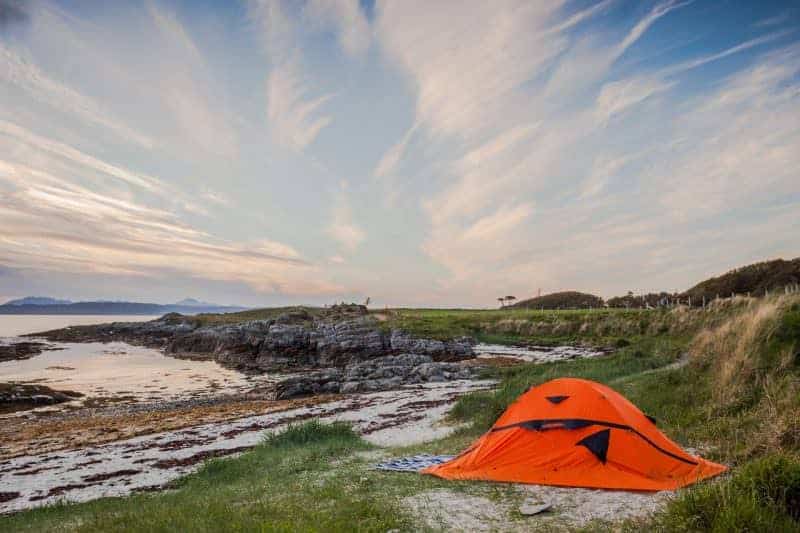
No matter whether you’re in the woods, wild camping, or staying at an established campsite, organisation is important. In the latter situation it can help you, at a minimum, to keep your kit dry, cooking materials clean, and morale up; in the former two situations, it can help you avoid some very nasty cases of waterborne poisoning.
Organisation at camp also shows a calm and respectful attitude towards bushcraft. Remember, if you would like to get hands on with shelter building, outdoor cooking, sourcing water and other vital bushcraft skills take a look at our Weekend Bushcraft course.
You can read the whole blog post or select the section that you’re most interested in by clicking on the links below.
Organising your camp: fire
There is little better than sitting around a campfire. But getting to the stage where you’re relaxing in the warm glow of the fire and sharing a tipple with friends requires a lot of hard work. Whether you’re lucky enough to be on a campsite that allows open fires, wild camping or practising bushcraft in the woods here are a few tips to help you to get organised. We will be writing a more comprehensive guide to fire lighting in a few weeks so keep checking back in.
Choosing a location for your fire
In this section, we take a look at how you can best choose a location for your fire.
Successfully lighting and maintaining a fire begins with choosing the location. Your first consideration should be proximity to a source of fuel for the fire, assuming that you’re either on a campsite where kindling is provided or in the UK woods (with the landowner’s permission of course) then that shouldn’t be a problem.
For information on how to choose a location for your camp in the woods click here. Remember, never, ever light a fire on Dartmoor.
Your fire should be on flat ground, away from vegetation or roots that might catch fire. The fuel that you think you might need should be gathered as soon as, or even before, you’ve chosen your location.
Fire safety considerations when camping
One of the key things to consider when choosing the location of your fire or BBQ is its proximity to your tent. This is particularly important when thinking about carbon monoxide poisoning. Carbon monoxide is odourless and colourless and kills about 50 people per year. While carbon monoxide poisoning is more closely associated with bringing BBQs or stoves into tent awnings and has caused some tragic deaths, it is also worth being careful with open fires. Keep both open fires and BBQs a safe distance away from your tent and never bring the latter inside, not even into the awning.
Keeping your fire going when out in the woods
With good organisation, you can keep your campfire going all night, and even cook off the hot embers the next day.
Choosing your fuel
Generally speaking, woods that are soft (as opposed to softwoods) tend to burn fast, throwing out a lot of light but giving only a few embers. While woods that are hard (as opposed to hardwoods) burn slowly, giving out a great deal of heat and leaving lots of embers to cook on.
Commonly found woods for fuel
Some commonly found woods in the UK that make for good fuel are beech, oak, ash and chestnut.
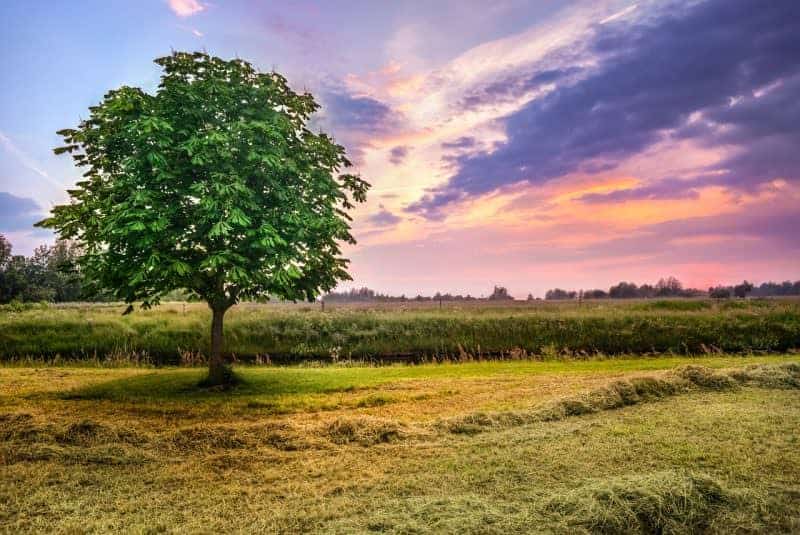
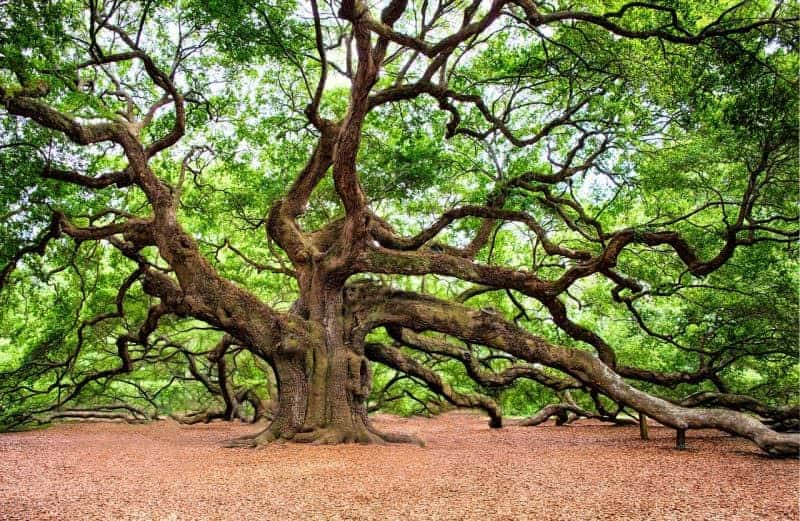
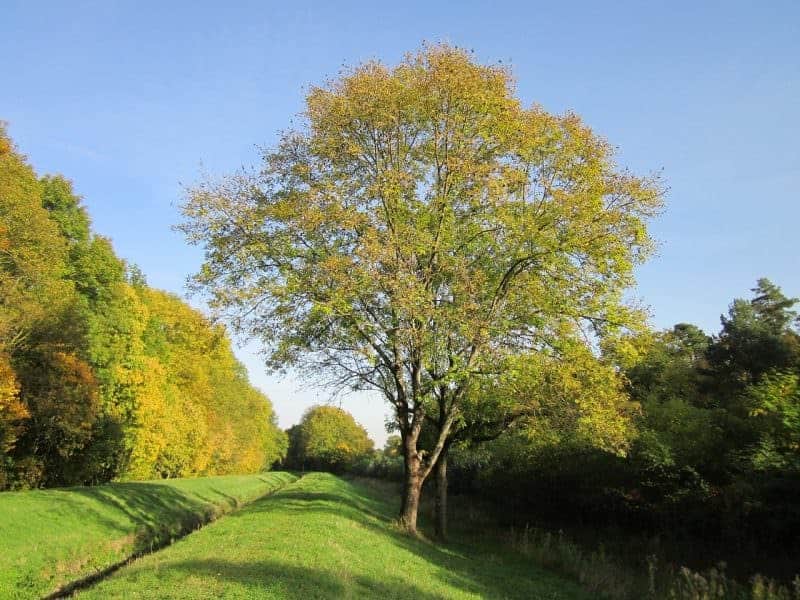
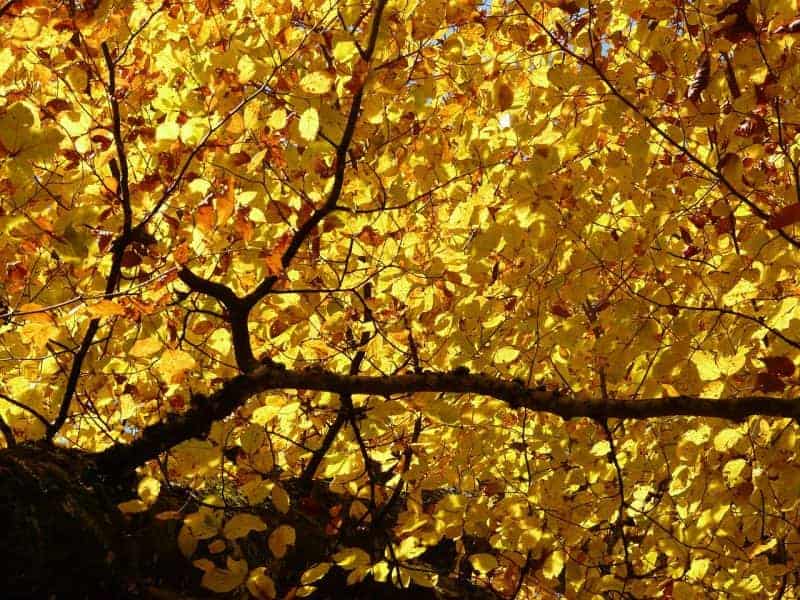
Choosing a type of fire that will keep burning
Having collected all the fuel that you think will need to keep your fire going it is time to choose your fire type.
One of the best types of fire for an overnight camp is the ‘Indian’s’ fire. This fire is made up of a collapsed teepee fire in the centre; with three or four long logs, each about the thickness of your forearm, protruding from it. One end of each log goes into the fire while the other end rests on the ground away from it. This forms a sort of star shape. As the fire burns through the end of the protruding logs they can simply be slowly pushed further into the centre.
Organising your camp: food
Food is not only essential for survival but also a great morale booster. There’s little better than a stew made with foraged ingredients, slow cooked over an open fire and eaten under the stars; it’s enough to put life back into even the most tired of legs. Later this month we’ll cover campfire cooking in depth so keep checking back in. Remember though, successful campfire cooking starts with organising your fire and your food.
Choosing what food to pack for your trip
Meal planning for the outdoors is quite a skill. Let’s assume for the purposes of this blog that you’re walking to your destination and therefore have a limited amount of space in your bag and a limit on the weight you can carry.
Weight is of paramount importance
When hiking to your campsite, forget about bringing tins of food or bags of vegetables. What you need are meals that are nutritious, easy to make and light to carry. There is a school of thought that promotes ultra-lightweight vacuum packed meals but for the sake of money and taste, it is better to opt for ‘real’ food.
Think in terms of calories not plate size
Think not what will go on your plate but what you will consume in terms of calories. With this in mind, you can’t go far wrong with things such as granola, cheese, chorizo and pasta. You can work out the calorific value of each of these foods using the label. There are a number of free online tools to help you to work out the number of calories you need such as this one from the Livestrong Foundation.
Organise your food into meals and think of your abilities
Think of what you are packing in terms of meals. How many meals will your pasta, cheese and chorizo make? Then consider these in terms of your abilities. If you’re planning on cooking pasta, for example, then you need to be confident in your abilities to source water. Likewise, if you’re planning on cooking for many, then consider how confident are you in your ability to do so. Foraged wild foods can also make a great addition to any meal.
If you would like to improve your foraging abilities then come on one of our Weekend Bushcraft courses where you will also learn about fire lighting and cooking over a campfire.
Where and how to store your food in bushcraft and camping
The key to storing your food when out in the woods, enjoying a spot of wild camping, or even at an established campsite, is to keep it tidy. Clean up at the end of meals, don’t leave any food out overnight and tidy away all left overs. When outdoors in the UK food is most likely to attract bold foxes, badgers or rats. Animals are primarily driven by smells, make sure that you not only store your food in airtight containers but also keep your camp clean in order to reduce smells from rubbish. There are plenty of stories of animals coming through tents in order to get at food so make sure that, where possible, you suspend your food off the ground.
Food hygiene in bushcraft and wild camping
Food hygiene when out in the woods or wild camping is of utmost importance and will be covered in more detail in our later blog posts. At the most basic though, it is important to clearly define the cooking and food preparation areas, keep food handling to a minimum, only eat fresh food and ensure that everything is thoroughly cooked.
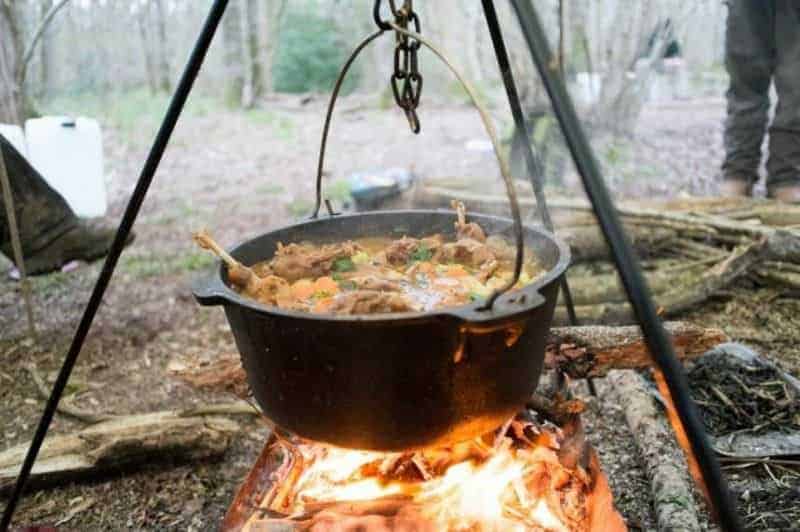
Organising your camp: hygiene
When camping at an established campsite, complete with showers, toilets and even washing machines, then keeping clean is easy. However, when wild camping or out in the woods in can be a much more difficult matter.
Going to the toilet
When out wild camping or practising bushcraft in the UK it is essential to maintain decent hygiene. This includes maintaining strict discipline over toilet routines. If solo wild camping then a simple depression dug into the ground may suffice. However, if you’re out practising bushcraft in the UK woods then you need a more organised setup. A proper latrine should be dug about four feet deep well away from the camp itself. Stools should be covered with soil and toilet paper should be burned after use – not on the campfire, take a cigarette lighter with you for this very purpose. When you move on be sure to clearly mark the location of the latrine.
Washing your hands in the woods
Take alcohol based sanitiser gel with you when out and about. This should be used after going to the bathroom, after first aid incidents and before eating. Keep food handling to a minimum and make sure that everything is thoroughly cooked before eating.
A word on soap
It can be a good idea to take soap with you when out in the woods, particularly if you’re going to be nearby a water source. However, soap that is packed full of chemicals is harmful to the environment, as it washes off your body it is polluting the river by which you are bathing and killing the surrounding wildlife. Choose an eco-friendly soap, ideally an organic one made from natural oils and free from artificial fragrances.
Where to wash
To avoid harming the environment it is best not to wash directly in the water source. If you do wash in a stream wash downstream from where you are gathering your water. Always gather your water as close to the source as possible; a stream over a river, and a spring over a stream.
Learn how to organise your bushcraft camp in the UK
Learn how to organise your campsite properly and practice fire lighting, campfire cooking, shelter building on a weekend bushcraft course.
At Wildway Bushcraft we offer a weekend bushcraft course which covers all the basics of bushcraft and survival skills including organisation.
The course is suitable for adults and children and is a great way to spend time with friends.
On the course, you will learn a number of basic bushcraft skills including;
- Shelter building
- Fire lighting
- Campfire cooking
- Water sourcing
and much, much more.
For more information, click here.



